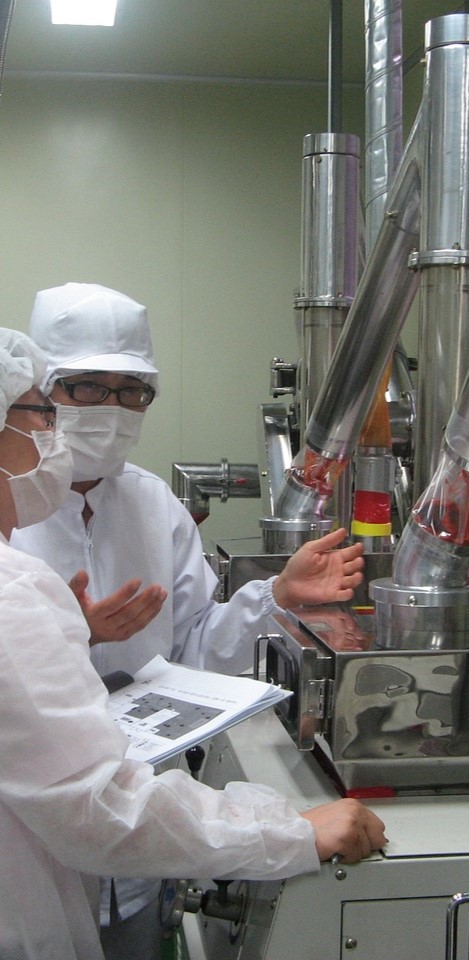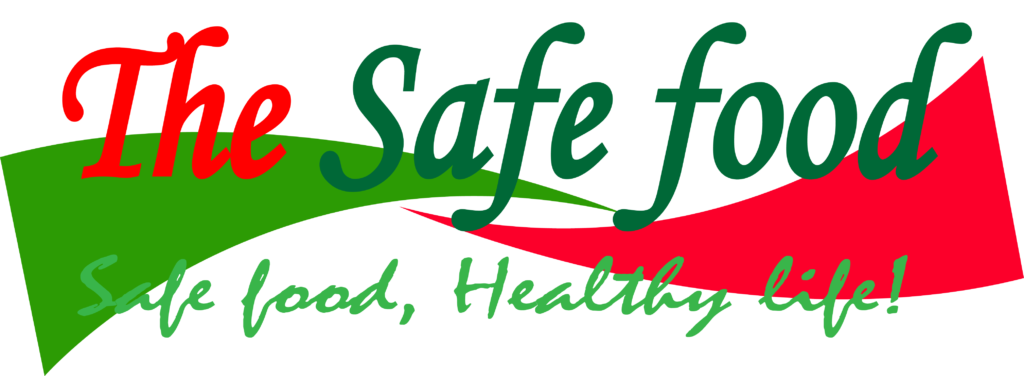
Covered:
- Definition of Food Security
- Impact of the COVID-19 Pandemic on Food Security
- Lessons Learned from the Pandemic: Identifying vulnerabilities and gaps
- Importance of Supporting Smallholder Farmers
- Fragility of Global Food Supply Chains
- Vulnerability of Informal Food Systems
- Strengthening Social Safety Nets
- Resilience to Climate Change
- Addressing Inequalities
- Enhancing Data and Monitoring Systems
- Promoting Sustainable and Healthy Diets
- Strategies for Improving Food Security Post-Pandemic
- Strengthening social safety nets and support systems
- Collaborative efforts and international cooperation for food security
- Building a resilient and inclusive food system.
What is food security?
Understanding food security is crucial for addressing global hunger and ensuring access to nutritious food for all individuals.
Food security can be defined as the condition in which all people, at all times, have physical, social, and economic access to sufficient, safe, and nutritious food that meets their dietary needs and preferences for an active and healthy life.
Components of Food Security
Key Components of Food Security include the following
- Availability: Adequate quantities of food should be consistently available to meet the nutritional requirements of the population. This includes both food produced domestically and imports.
- Access: Individuals must have the economic and physical means to obtain food. It involves factors such as income levels, purchasing power, employment opportunities, social safety nets, and access to markets, including transportation and infrastructure.
- Utilization: Food must be utilized effectively by individuals to provide adequate nutrition and nourishment. This component encompasses factors such as dietary diversity, safe food handling and preparation, access to clean water and sanitation facilities, and adequate healthcare.
- Stability: Food security requires stability in all the above components over time. It means that access to food should not be threatened by shocks, such as natural disasters, conflicts, or price fluctuations, which can disrupt availability and access to food.
- Sustainability: Ensuring long-term food security necessitates sustainable agricultural and food production systems that protect natural resources, preserve biodiversity, minimize environmental impacts, and promote resilience to climate change.
Understanding these key components of food security is essential for designing effective policies and interventions to address hunger and malnutrition. It requires a holistic approach that considers not only the quantity of food available but also the socio-economic factors, utilization practices, and environmental sustainability achieve lasting food security for all.
Food safety knowledge is for all!

Every consumer deserves to have high quality and safe food. …Read more!

Impact of the COVID-19 pandemic on food security
The COVID-19 pandemic has had a significant impact on global food security, exacerbating existing vulnerabilities and creating new challenges. some key impacts of the pandemic on food security across the globe are discussed here. They include;
- Disruptions in Food Supply Chains: Lockdown measures, travel restrictions, and labor shortages disrupted food supply chains, affecting the production, processing, distribution, and availability of food. Border closures and logistical challenges also led to delays in importing and exporting food, causing price fluctuations and reducing access to certain food items.
- Income Loss and Economic Impacts: The pandemic has led to widespread income loss, unemployment, and economic downturns, particularly in vulnerable communities and sectors heavily reliant on informal employment. Reduced income and purchasing power have hindered people’s ability to afford nutritious food, increasing the risk of food insecurity and malnutrition.
- Disruptions in Agricultural Production: Movement restrictions and labor shortages have affected agricultural activities, including planting, harvesting, and farm labor. Farmers have faced challenges in accessing inputs, agricultural markets, and labor, impacting the production and availability of food. This has been particularly detrimental for smallholder farmers and subsistence agriculture.
- Disruption of Food Assistance Programs: COVID-19 has disrupted food assistance programs, school feeding initiatives, and community-based interventions. School closures have affected millions of children who rely on school meals for nutrition. Restrictions on gathering and social distancing measures have also limited the functioning of food distribution and assistance programs.
- Increased Food Loss and Waste: The pandemic has resulted in increased food loss and waste at various stages of the supply chain. Surpluses in perishable products, restaurant closures, and disruptions in foodservice industries have contributed to food waste, while inadequate storage facilities and transport difficulties have led to food loss in some regions.
- Secondary Impacts on Nutrition and Health: The pandemic has indirect effects on nutrition and health, such as disruptions in healthcare services, reduced access to healthcare, and interruptions in essential nutrition programs. This can have long-term consequences on individuals’ well-being, especially for vulnerable populations such as children, pregnant women, and individuals with pre-existing health conditions.
Read more about Effects of COVID-19 on the food industry
Lessons learned from the pandemic: identifying vulnerabilities and gaps
The COVID-19 pandemic has revealed several vulnerabilities and gaps in global food security. Understanding these lessons is crucial for building more resilient and sustainable food systems.
- Importance of Supporting Smallholder Farmers: Smallholder farmers, who constitute a significant portion of the global food producers, faced significant challenges during the pandemic. Supporting these farmers with access to resources, finance, technology, and market opportunities is crucial for enhancing their resilience and ensuring food security at the local and national levels.
- Fragility of Global Food Supply Chains: The pandemic exposed the fragility of global food supply chains, highlighting the risks associated with long and complex supply chains. There is a need to strengthen local and regional food systems, promote diversified sourcing, and invest in infrastructure and logistics to enhance resilience in the face of disruptions.
- Vulnerability of Informal Food Systems: Informal food systems, including street vendors and local markets, suffered during lockdowns and movement restrictions. Recognizing and supporting these informal systems, which often play a vital role in food access for marginalized populations, is essential for maintaining food security during crises.
- Strengthening Social Safety Nets: The pandemic highlighted the importance of robust social safety nets to protect vulnerable populations. Enhancing social protection programs, such as cash transfers, food assistance, and nutrition support, can help mitigate the impact of economic shocks and ensure access to adequate and nutritious food for those most in need.
- Resilience to Climate Change: The pandemic underscored the urgency of building climate resilience in food systems. Climate change impacts, such as extreme weather events, can exacerbate food insecurity. Investing in climate-smart agriculture, water management, and disaster preparedness can help enhance the resilience of food systems to future shocks.
- Addressing Inequalities: The pandemic exacerbated existing inequalities, with marginalized communities facing disproportionate impacts on food security. Tackling structural inequalities and ensuring equitable access to resources, services, and opportunities is crucial for building more inclusive and sustainable food systems.
- Enhancing Data and Monitoring Systems: Strengthening data collection, monitoring, and early warning systems is vital for timely response to food security crises. Improved data on food production, supply chains, and vulnerabilities can inform evidence-based decision-making and targeted interventions during emergencies.
- Promoting Sustainable and Healthy Diets: The pandemic highlighted the importance of promoting sustainable and healthy diets. Encouraging diversified diets that are nutritionally rich, reduce reliance on resource-intensive foods, and promote local and seasonal produce can contribute to both human and planetary health.
Strategies for improving food security post-pandemic
Improving food security post-pandemic requires comprehensive strategies that address the underlying causes and vulnerabilities exposed during the crisis. Here are some key strategies for enhancing food security:
- Invest in Resilient and Sustainable Agriculture: Promote sustainable agricultural practices that conserve natural resources, minimize environmental impacts, and enhance productivity. This includes supporting agroecology, organic farming, precision agriculture, and climate-smart techniques to improve the resilience of food production systems.
- Strengthen Local and Regional Food Systems: Enhance local and regional food production, processing, and distribution networks to reduce reliance on long and fragile global supply chains. Support smallholder farmers, invest in local infrastructure and storage facilities, and promote direct farmer-consumer linkages through farmers’ markets and community-supported agriculture.
- Enhance Social Safety Nets: Strengthen social safety nets, including cash transfer programs, food assistance, and nutrition support, to protect vulnerable populations during crises. Ensure that safety net programs are inclusive, targeted, and accessible to those most in need, including marginalized groups and rural communities.
- Improve Agricultural and Market Infrastructure: Invest in agricultural infrastructure, such as irrigation systems, rural roads, storage facilities, and market infrastructure, to enhance efficiency, reduce post-harvest losses, and facilitate access to markets. This enables farmers to sell their produce at fair prices and improves market integration.
- Promote Climate Resilience: Build climate resilience in agriculture by investing in climate-smart practices, including drought-resistant crops, resilient farming systems, water management techniques, and early warning systems. Support farmers in adopting climate-adaptive strategies to mitigate the impact of climate change on food production.
- Enhance Access to Finance and Technology: Facilitate access to financial services, credit, and insurance for smallholder farmers to invest in modern technologies, quality inputs, and sustainable practices. Promote digital solutions and information and communication technologies (ICTs) to improve access to market information, weather forecasts, and agricultural extension services.
- Foster Research and Innovation: Invest in agricultural research and development to develop resilient crop varieties, improved farming techniques, and innovative solutions for sustainable food production. Support public-private partnerships and knowledge-sharing platforms to facilitate the adoption of research findings and technological innovations.
- Enhance International Cooperation: Promote international cooperation, collaboration, and knowledge sharing to address global food security challenges collectively. Foster partnerships between governments, international organizations, NGOs, and the private sector to leverage resources, expertise, and best practices for sustainable and inclusive food systems. By implementing these strategies, countries can enhance food security, strengthen resilience to future shocks, and ensure access to safe, nutritious, and affordable food for all individuals, particularly the most vulnerable populations.
Strengthening social safety nets and support systems
Strengthening social safety nets and support systems in the post-pandemic era is of utmost importance to address the socio-economic impacts and vulnerabilities revealed by the crisis. It is crucial to ensure that the most vulnerable individuals and communities receive the necessary assistance and resources to rebuild their lives and regain stability.
This can be achieved by expanding social protection programs, such as cash transfer schemes and unemployment benefits, to provide financial support to those facing economic hardships. Targeting vulnerable groups, including low-income households, informal workers, and marginalized populations, will help direct resources where they are most needed.
Additionally, improving access to basic services such as healthcare, education, clean water, and sanitation is essential for comprehensive support. By fostering job creation, investing in skills development, and promoting entrepreneurship, social safety nets can enable individuals to regain livelihoods and contribute to economic recovery.
Strengthening healthcare systems and mental health support will also play a crucial role in addressing the long-term impacts of the pandemic. By implementing these measures, governments can provide a safety net to help individuals and communities recover, rebuild resilience, and create a more inclusive and sustainable society.
Collaborative efforts and international cooperation for food security
Collaborative efforts and international cooperation play a vital role in addressing the complex issue of global food security. To tackle this challenge effectively, countries and stakeholders must work together. One crucial aspect is knowledge sharing and capacity building, where best practices, research findings, and experiences are exchanged among nations.
Platforms, networks, and partnerships enable dialogue and collaboration, facilitating the dissemination of information and the strengthening of skills, institutions, and policies related to food security. Additionally, multilateral cooperation through institutions like the United Nations, World Bank, and World Trade Organization provides avenues for coordination, resource mobilization, and collective action.
By aligning national policies with international frameworks and targets such as the Sustainable Development Goals, countries can harmonize their efforts and address food security challenges more comprehensively. Through policy coordination and mutual support, collaborative efforts can drive positive change and enhance food security for all.
Conclusion
Building a resilient and inclusive food system for the future requires collective action, collaborative efforts, and international cooperation. The lessons learned from the COVID-19 pandemic have highlighted the vulnerabilities and gaps in our current food systems, emphasizing the need for transformative change. By embracing sustainable agricultural practices, strengthening social safety nets, investing in infrastructure and technology, and promoting equitable access to resources, we can lay the foundation for a more resilient and inclusive food system.
This endeavor requires collaboration among governments, international organizations, civil society, and the private sector. Knowledge sharing, capacity building, and policy coordination at regional and global levels are vital for addressing global food security challenges. By working together, we can leverage expertise, resources, and best practices to develop innovative solutions, overcome barriers, and ensure food security for all.
Furthermore, building a resilient and inclusive food system goes beyond addressing immediate crises. It involves adopting long-term strategies that prioritize sustainability, climate resilience, and the well-being of communities. It requires empowering smallholder farmers, promoting agroecology, improving access to markets, and investing in research and innovation.
Our Blog ↗
Read the latest from our blog
Ask a Question ↗
Ask a question and get answers from our community
Give Feedback ↗
We value your feedback.

